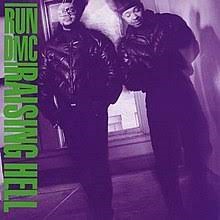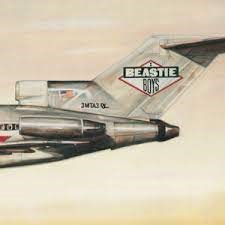The 10 Best-Selling Early Hip Hop Albums that Defined a Generation
The 10 Best-Selling Early Hip Hop Albums that Defined a Generation
Early Hip Hop grew from Bronx block parties into a global culture. It fused DJs, MCs, dancers and street art into something new and vibrant. This article will highlight the albums that shaped that rise. First, though, here are the questions people most often type into Google about early hip hop — with clear, concise answers to set the scene.
Questions people often ask
What was the first major hip hop song?
Most historians point to the Sugarhill Gang’s “Rapper’s Delight” (1979) as the first major, mainstream hip hop single. It brought rap into the pop charts and introduced many listeners to the new form. While other tracks appeared around the same time, “Rapper’s Delight” reached a much wider audience and changed how the industry viewed hip hop.
What are the four main elements of hip hop?
The four canonical elements are DJing (turntable culture), MCing (rapping), breaking (breakdancing), and graffiti art. Each element served a different role in early street culture, and together they formed the cultural backbone of hip hop.
When did hip hop start to become mainstream?
Recorded hip hop first hit national attention in 1979–1980 with singles like “Rapper’s Delight”. Then the genre crossed bigger cultural thresholds in the mid-1980s, as acts such as Run-DMC, LL Cool J and others received heavy radio, TV and retail exposure. That decade turned hip hop from a local scene into mainstream popular music.
Who is considered the founder of hip hop?
Many credit DJ Kool Herc (Clive Campbell) as the foundational figure. In the early 1970s he pioneered extended drum “breaks” at Bronx parties, a technique that helped spawn the musical and social practices we now call hip hop. Other early leaders — like Afrika Bambaataa and Grandmaster Flash — also shaped the movement.
What was the first hip hop record to go platinum?
Run-D.M.C.’s Raising Hell (1986) became the first hip hop album to earn platinum (and later multi-platinum) certification. Its crossover hits and high-profile collaborations helped push sales into the mainstream and proved hip hop’s commercial power.
What was the first hip hop album ever released?
Full-length hip hop LPs arrived after successful singles. The Sugarhill Gang’s self-titled album (1980) often receives credit as the first widely released hip hop studio album, though several early LPs and singles appeared around the same time. In short, singles led the way, and albums followed as labels noticed the demand.
The Albums
Run-DMC – Raising Hell (1986)

Run-DMC’s Raising Hell marked a turning point in Early Hip Hop. Released in 1986, it became the first rap album to go platinum and then multi-platinum, proving the genre’s mainstream potential. Its sales success opened doors for every artist who followed.
The record blended raw beats with rock influences, most famously on “Walk This Way,” a collaboration with Aerosmith that dominated MTV. Because of this bold crossover, hip hop gained a bigger stage and reached a new global audience. The stripped-down production, led by Rick Rubin, highlighted the group’s commanding rhymes and aggressive delivery.
Key singles included “It’s Tricky” and “My Adidas,” both of which showcased Run-DMC’s confident style. Their lyrical themes balanced street culture with playful swagger, helping to define the sound and attitude of mid-1980s rap. As a result, the album reshaped expectations of what hip hop could achieve commercially and creatively.
Critics praised Raising Hell for its innovation and accessibility, while fans made it an instant classic. Beyond sales, it cemented Run-DMC’s place as pioneers who transformed the genre from niche to mainstream. The album also influenced fashion, with the group’s Adidas sneakers and leather jackets becoming cultural symbols.
Ultimately, Raising Hell was more than a commercial milestone. It was a cultural event that expanded the possibilities of Early Hip Hop, making it one of the most important albums in the history of the genre.
Beastie Boys – Licensed to Ill (1986)

The Beastie Boys’ Licensed to Ill is another cornerstone of Early Hip Hop, released in late 1986. It became the first rap album to top the Billboard 200, a historic achievement that proved the genre’s crossover power. Certified Diamond in later years, its sales made it one of the most successful hip hop releases ever.
The album fused hip hop with punk rock energy, creating a rebellious, high-octane sound. Tracks like “Fight for Your Right” and “No Sleep Till Brooklyn” became cultural anthems. With brash humor and bold hooks, the Beastie Boys appealed to both rock and rap fans.
Because of its playful tone and aggressive delivery, Licensed to Ill expanded hip hop’s audience to suburban youth, particularly among white listeners unfamiliar with the genre. This shift brought both praise and controversy, sparking conversations about authenticity and cultural boundaries. Still, the album’s impact was undeniable.
Produced by Rick Rubin, the beats were sharp and stripped back, complementing the group’s rowdy style. Lyrical themes mixed satire, party culture, and youthful defiance, which resonated with fans across multiple genres. Consequently, Licensed to Ill didn’t just sell records — it reshaped how hip hop was marketed and consumed.
Critics initially offered mixed reviews, but over time the album gained recognition as a groundbreaking work. Today, it stands as one of the most influential albums of the 1980s. Its blend of rock riffs and rap swagger helped define the mainstream sound of Early Hip Hop.
Grandmaster Flash & The Furious Five – The Message (1982)
Grandmaster Flash & The Furious Five’s The Message is a defining release in Early Hip Hop, issued in 1982. While the album itself didn’t reach huge sales at first, the title track became a milestone single. Selling over 500,000 copies, “The Message” shifted hip hop’s direction forever.
Unlike earlier party-centered rhymes, “The Message” addressed poverty, crime, and urban struggles. Its stark social commentary showed that hip hop could be more than entertainment. As a result, the song transformed expectations of the genre’s lyrical scope.
Musically, the album combined electronic beats with sharp vocals, setting it apart from disco-driven tracks of the late 1970s. Grandmaster Flash’s turntable skills elevated the sound, while Melle Mel’s forceful delivery carried the weight of the lyrics. This contrast between technical innovation and raw storytelling gave the record lasting power.
Key tracks such as “She’s Fresh” and “It’s Nasty” balanced upbeat energy with experimentation. However, “The Message” remained the centerpiece, later ranked among the greatest songs in popular music. Because of this single, the album holds legendary status in hip hop history.
Critics recognized its cultural importance immediately, praising its fearless honesty. Over time, historians identified The Message as a turning point for Early Hip Hop, laying the groundwork for politically charged rap. Many later artists, from Public Enemy to Tupac, cited its influence.
Though not the biggest commercial hit of its era, The Message proved hip hop could carry weighty themes. It redefined the genre’s purpose, showing that rap could give voice to communities often ignored by mainstream music.
Sugarhill Gang – Sugarhill Gang (1980)
The Sugarhill Gang’s self-titled debut album holds a crucial place in Early Hip Hop. Released in 1980, it introduced rap to the mainstream through the groundbreaking single “Rapper’s Delight.” That track became a global sensation, selling millions of copies and breaking into the Billboard Top 40.
Because “Rapper’s Delight” was the first major hip hop hit, the album gained historic significance. It demonstrated that rap music could thrive on radio and in commercial markets, a radical idea at the time. As a result, record labels began to see hip hop as more than a passing trend.
Musically, the album leaned on disco-inspired beats, blending danceable grooves with playful rhymes. The group’s charismatic delivery made the songs accessible to audiences unfamiliar with hip hop’s block party origins. Tracks like “Sugarhill Groove” and “Here I Am” carried the same upbeat, celebratory tone.
Controversy also surrounded the release. “Rapper’s Delight” borrowed heavily from Chic’s “Good Times,” raising debates about originality and sampling. However, this practice later became a cornerstone of the genre. Consequently, the album paved the way for future artists to experiment with borrowed sounds and rhythms.
Critics at the time offered mixed reactions, but the record’s influence has only grown with hindsight. The Sugarhill Gang proved that Early Hip Hop could succeed on a global scale, inspiring countless young MCs and DJs. Their breakthrough opened doors for the culture to expand beyond New York and into worldwide recognition.
Ultimately, the Sugarhill Gang album stands as the first widely distributed hip hop LP. Its success transformed a local movement into a commercial force, cementing its place in music history.
Run-DMC – Run-DMC (1984)
Run-DMC’s self-titled debut album defined the sound of Early Hip Hop in 1984. It became the first rap album to achieve Gold certification, proving that hip hop could compete with established genres in record sales. This success positioned the group as cultural leaders and paved the way for larger achievements later in the decade.
The album showcased a stripped-down, aggressive sound that broke from disco’s influence. Rick Rubin’s minimalist production highlighted booming drum machines and sharp guitar riffs. Because of this bold style, songs like “Rock Box” blended rap with rock elements, pushing boundaries and attracting new listeners.
Key singles included “It’s Like That” and “Hard Times,” both of which carried streetwise commentary. Their raw energy resonated with young audiences, while their unpolished delivery set a new standard for authenticity in hip hop. As a result, Run-DMC became symbols of credibility and confidence within the growing movement.
Beyond music, the group’s style left a lasting mark. Adidas sneakers, fedoras, and leather jackets became iconic, influencing fashion across youth culture. Consequently, the album was not only about sound but also about image and identity.
Critics praised Run-DMC for its innovation, calling it a bold departure from earlier releases. Over time, historians recognized the record as a cornerstone of Early Hip Hop, shaping the future direction of rap. The album’s fusion of rock and rap also foreshadowed the massive crossover success the group would enjoy with Raising Hell.
Ultimately, Run-DMC solidified the group’s reputation as trailblazers. It brought a harder, more street-oriented style to the forefront, giving hip hop the edge it needed to thrive in the mainstream.
LL Cool J – Radio (1985)
LL Cool J’s debut album Radio exploded onto the scene in 1985, marking a new era in Early Hip Hop. It was the first Def Jam release distributed by a major label and quickly earned Platinum certification. This breakthrough established LL Cool J as one of the genre’s first true solo superstars.
Produced by Rick Rubin, the album carried a stripped-down, hard-hitting sound built around drum machines and sparse samples. Because of this raw production, tracks like “Rock the Bells” and “I Can’t Live Without My Radio” hit with unmatched intensity. The minimalist beats left space for LL’s dynamic delivery to dominate.
Lyrically, LL Cool J brought charisma, confidence, and brash storytelling. His playful arrogance gave hip hop its first taste of the swagger that would later define rap icons. As a result, Radio appealed both to hardcore fans and to a broader youth audience.
The album’s success showed that a single MC could command attention without needing a full crew behind him. Consequently, Radio reshaped the possibilities for solo careers in hip hop. LL’s style and persona also influenced fashion, language, and attitude across the culture.
Critics praised the album’s energy and authenticity. Fans connected with its streetwise honesty, making it an instant classic in Early Hip Hop. Over the years, its reputation has grown, often cited as one of Def Jam’s most important releases.
Ultimately, Radio proved that hip hop could succeed as both art and business. LL Cool J’s debut not only launched his long career but also demonstrated that rap had the power to dominate the mainstream.
Kurtis Blow – Kurtis Blow (1980)
Kurtis Blow’s self-titled debut album holds an essential place in the story of Early Hip Hop. Released in 1980, it introduced mainstream audiences to one of rap’s first solo stars. Its standout single, “The Breaks,” became the first rap track to earn Gold certification, selling over 500,000 copies.
The album blended funk-inspired grooves with Kurtis Blow’s smooth yet commanding vocal delivery. Because of its accessible style, tracks like “Hard Times” and “Throughout Your Years” reached listeners beyond New York’s hip hop scene. The record showcased how rap could succeed outside of party jams and street battles.
“The Breaks” stood out for its clever wordplay and irresistible rhythm. As a result, it became an international hit and a blueprint for future singles. This track proved that rap music could thrive commercially while still staying rooted in rhythmic innovation.
Kurtis Blow’s success also highlighted the potential of solo MCs. Until then, hip hop was largely group-driven, but this album shifted perceptions. Consequently, many later stars—from LL Cool J to Jay-Z—followed in his footsteps. His career also broke barriers, as he became the first rapper signed to a major label.
Critics recognized the album’s historical importance, even if its sound felt lighter than later hardcore releases. Over time, it earned respect as a foundation stone in Early Hip Hop, representing a moment when rap transitioned from underground culture to recorded music.
Ultimately, Kurtis Blow was more than just a debut. It was proof that hip hop could sustain an album format and reach global audiences. By showing that rap had commercial promise, Kurtis Blow helped open the door for an entire generation of artists.
Whodini – Escape (1984)
Whodini’s Escape, released in 1984, became one of the first Platinum-certified albums in Early Hip Hop. Its success demonstrated that hip hop groups could craft polished, radio-friendly records while maintaining cultural credibility. As a result, Whodini became pioneers of the emerging “New School” sound.
The album’s production leaned heavily on synthesizers and drum machines, creating a sleek, electronic feel. Songs like “Five Minutes of Funk” and “Freaks Come Out at Night” combined danceable beats with catchy hooks, making them club staples. Because of this accessible style, Whodini reached audiences beyond the underground.
Unlike the raw energy of Run-DMC or LL Cool J, Whodini emphasized storytelling and groove. Their lyrics blended humor, nightlife tales, and social observations, offering listeners a wider range of themes. Consequently, the group set a blueprint for balancing commercial appeal with artistry.
Escape was also notable for its influence on live performance. Whodini became one of the first hip hop acts to tour with full stage productions, including dancers and coordinated shows. This move elevated the perception of hip hop concerts and inspired later artists to expand their stagecraft.
Critics praised Escape for its sophistication, calling it both entertaining and forward-looking. Fans embraced it as a party record, while historians later recognized its role in shaping mainstream hip hop. Over time, tracks from the album have remained staples of classic hip hop playlists.
Ultimately, Escape proved that Early Hip Hop could thrive with polished production and broader subject matter. It helped solidify Whodini’s legacy as innovators who pushed the genre toward its future, while still keeping their music rooted in the culture’s vibrant energy.
Fat Boys – The Fat Boys (1984)
The Fat Boys’ self-titled debut, released in 1984, brought humor and beatboxing to Early Hip Hop. Certified Gold by the RIAA, the album demonstrated that hip hop could combine entertainment, personality, and commercial appeal. Its success helped diversify the genre’s sound and image.
Musically, the group focused on beatboxing as a core element, adding a unique rhythmic layer to tracks like “Jail House Rap” and “Can You Feel It?” Because of this playful style, they stood out from the harder-edged sounds of Run-DMC and LL Cool J. Their humor and charisma made the album appealing to broader audiences, including children and families.
Lyrical themes ranged from lighthearted fun to storytelling, showcasing a versatile approach to rap. As a result, Fat Boys helped show that hip hop didn’t have to take itself too seriously to succeed commercially. Their beats, combined with clever wordplay, created tracks that were memorable and approachable.
The album also expanded hip hop’s cultural footprint beyond music. The group starred in a hit movie and appeared in numerous media outlets, illustrating the genre’s growing influence in entertainment. Consequently, their crossover appeal proved that rap could thrive in multiple formats.
Critics acknowledged the group’s innovation, praising the blend of humor, rhythm, and performance. Fans embraced the album’s fun energy, and historians recognize it as an important chapter in Early Hip Hop history. Its impact helped open doors for other artists to explore unconventional styles.
Ultimately, The Fat Boys demonstrated that hip hop could be playful, experimental, and commercially viable. The album remains a testament to the genre’s early diversity and the power of creative, boundary-pushing artistry.
Boogie Down Productions – Criminal Minded (1987)
Boogie Down Productions’ Criminal Minded, released in 1987, was a pivotal album in Early Hip Hop. Certified Gold, it introduced a harder, more aggressive sound that would influence hardcore and gangsta rap for years. Its raw energy marked a shift in the genre’s lyrical and musical focus.
The album combined streetwise storytelling with stripped-down beats, showcasing KRS-One’s commanding delivery. Tracks like “South Bronx” and “The Bridge is Over” reflected social realities and rivalries, highlighting hip hop’s capacity for cultural commentary. Because of this approach, the album became a blueprint for East Coast hardcore rap.
Musically, Criminal Minded fused heavy drum machine patterns with minimalist sampling, creating a gritty backdrop for KRS-One and Scott La Rock. This production style amplified the album’s intensity, giving it lasting influence. Consequently, it set a standard for raw, confrontational hip hop records.
Lyrically, the album explored crime, urban life, and competition, establishing themes that would dominate later hardcore rap. Its aggressive tone contrasted with the party-centric sound of earlier albums, signaling a maturation in the genre. Over time, Criminal Minded earned recognition as a landmark release in Early Hip Hop history.
Critics praised the album for its authenticity and fearless storytelling. Fans embraced its boldness, and historians often cite it as a turning point in hip hop’s development. The “Bridge Wars” rivalry added to its cultural significance, further embedding it in hip hop lore.
Ultimately, Criminal Minded proved that hip hop could tackle serious, gritty subjects without losing its musical appeal. It expanded the genre’s boundaries, leaving a lasting legacy for artists and audiences alike.
The 10 albums featured here showcase the creativity, innovation, and cultural impact of Early Hip Hop. Each record played a pivotal role in transforming a local movement into a global phenomenon. From party anthems to socially conscious tracks, these albums shaped the sound, style, and attitude of the genre. They also paved the way for future generations of artists, proving that hip hop could succeed both commercially and artistically. By exploring these groundbreaking releases, we see how Early Hip Hop laid the foundation for the dynamic, diverse, and influential culture we celebrate today.
Recent Posts
Queen studio albums: A Review
Phil Collins Albums Ranked & Reviewed – Complete Guide to Every Studio Album
The best of Massive Attack
Let’s Make Magic
Book Your Event DJ Now




